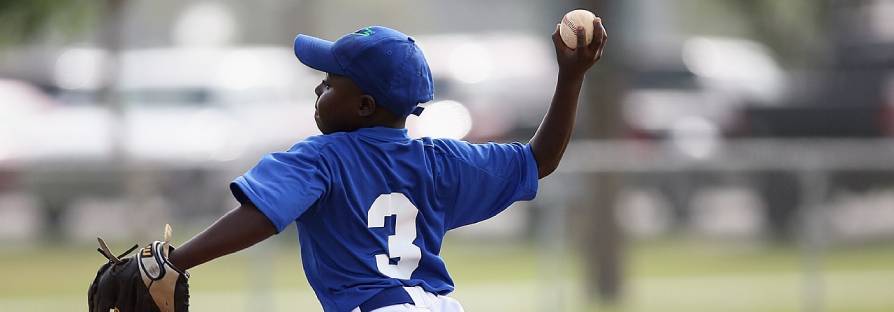
There are three common mistakes players and families tend to make when it comes to the recruiting process:
1. Assuming someone else is handling their recruiting.
While your high school or club coach and parents will play a big role in your recruiting process, you will have to put in the time and effort to find the right college program that fits your needs and expectations. Even with the help of a Recruiter/Scout and/or an Agency, it will be you meeting with a college coach. You have to sell yourself; no one is going to do it for you when you are in a one-on-one meeting with the coach.
2. Not putting enough emphasis on academics.
Your talent and athletic ability might catch a college coach’s eye, but a below average GPA will seriously limit your recruiting options. Your SAT’s will also matter. Make sure you are working as hard in the classroom as you are on the field.
3. Not exploring all opportunities.
Explore all your options. Do not limit your search to just one or two schools. Expand your search, come up with a top 10 list that match up with your academic interests. You will be surprised what a second or third choice will offer. You can always transfer.
While recruiting efforts vary across college programs at every level, coaches tend to follow the same steps when recruiting talent. The following outline gives a very basic look at how college coaches approach the recruiting process.
Determine recruiting needs (position, grad year):

The NCAA recruiting rules and calendar dictate how and when college coaches and recruits interact using four different time periods: contact, evaluation, dead and quiet.
The Contact Period: During this time, coaches and athletes are free to communicate via email, text, phone call, direct message, as well as in-person on campus, at tournaments and/or at the recruit’s school and home. For most sports, coaches can begin reaching out to athletes starting June 15 after sophomore year.
The Evaluation Period: The NCAA evaluation period is a specific time when college coaches are allowed to watch an athlete compete in person or visit their school. However, coaches are not allowed to communicate with that athlete (or parents) off the college campus.
The Dead Period: During a dead period, all in-person contact between college coaches and recruits is strictly prohibited, which means, coaches are not permitted to talk to recruits on-campus, at their high school, at sports camps or even when running into them while out.
The Quiet Period: College coaches are prohibited from off-campus in-person contact with recruits or their families during the quiet period. This means coaches cannot watch athletes compete in-person, visit their high school or talk to them at their home.
One of the most common misconceptions in college recruiting is that the process does not start until coaches can contact recruits. Athletes who wait until the official contact date to start connecting with colleges will be busy playing catch up while other athletes are actively building relationships with college coaches.
To avoid falling behind in the recruiting process, high school athletes should begin reaching out to college coaches as early as freshman year. Below are a few tips for connecting with college coaches via email, phone, and social media.
Email: A great way to get on a coach’s radar is by sending an introductory email. Before hitting send, make sure you have done your homework about the coach, the school, and the program. You should be able to explain why you are interested in the school and how you could contribute to the team. Do not forget to include your basic athletic information, GPA and contact information.
Phone: As you can imagine, a coach’s email is often stacked with incoming emails. What many athletes do not realize is that coaches receive very few phone calls from recruits. A phone call is a great way to introduce yourself and make a memorable impression. Before the contact period officially starts, college coaches are not permitted to talk with you over the phone, so be prepared to introduce yourself in a voicemail.
Social Media: Platforms like Twitter and Instagram offer athletes another way to reach out and connect with coaches. Athletes should only use these platforms if they are active and monitor the channel regularly (so you do not miss any messages). Be cautious when posting to your profile to ensure nothing questionable shows up on your account.
Not only do college coaches look for well-rounded student-athletes who are committed to both athletics and academics, but recruits must meet the academic eligibility requirements to compete at the college level. Whether you are looking to compete with the NCAA or NAIA, starting freshman year, work with your guidance counselor or advisor at your high school to ensure you will have meet the requirements upon graduation.

As you begin to narrow down your college choices to a list of roughly 5, you should have between 10-20 target schools and 5 safety schools. Remember, it is important to answer the following questions:
Education and major: Is there a field of study you are passionate about?
Geography: Would you like be close to home or across the country?
Experience Do you want to compete all four years? Do you want a sport and social balance?
To help you through this process, we suggest doing your research. See our lists of all colleges in the US to help breakdown your choices. Finding the best fit means taking a close look at all the schools that offer what you are looking for athletically and more importantly, academically. The goal is a four-year degree, and you should ask yourself if you could be happy attending a school even if you could no longer play your sport.

The first step to connecting with college coaches is creating a recruiting profile. Every recruit’s profile should be completed with the following information:
The recruit’s profile should be included in your introduction email to the Coach.
A highlight video is a valuable recruiting tool for college coaches, especially for those who are unable to easily watch recruits compete in person. A strong highlight video is between 3–5 minutes long, includes 20–30 clips from game footage and includes the athlete’s contact information at the start and end of the video. You can upload your video to You Tube and provide a link to the coach.

One of the necessary parts of any well-rounded recruiting process is attending camps, combines, showcases and tournaments. These events give college coaches the opportunity to watch a large number of recruits in a single place and allow top recruits to compete against one another. The challenge for any family is deciding which events to attend.
Here is a guide for understanding the value of different recruiting events: